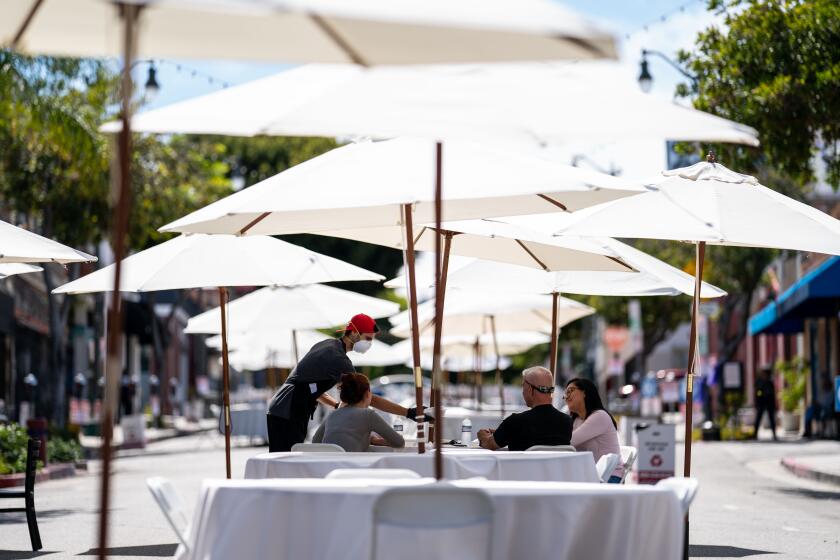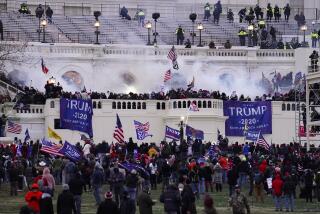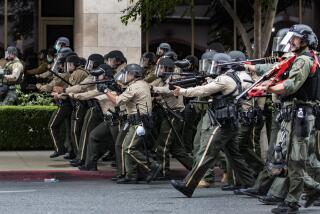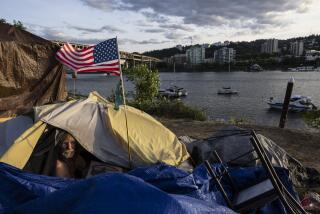Editorial: Trump’s crackdown in Portland shows his wretched talent for making everything worse
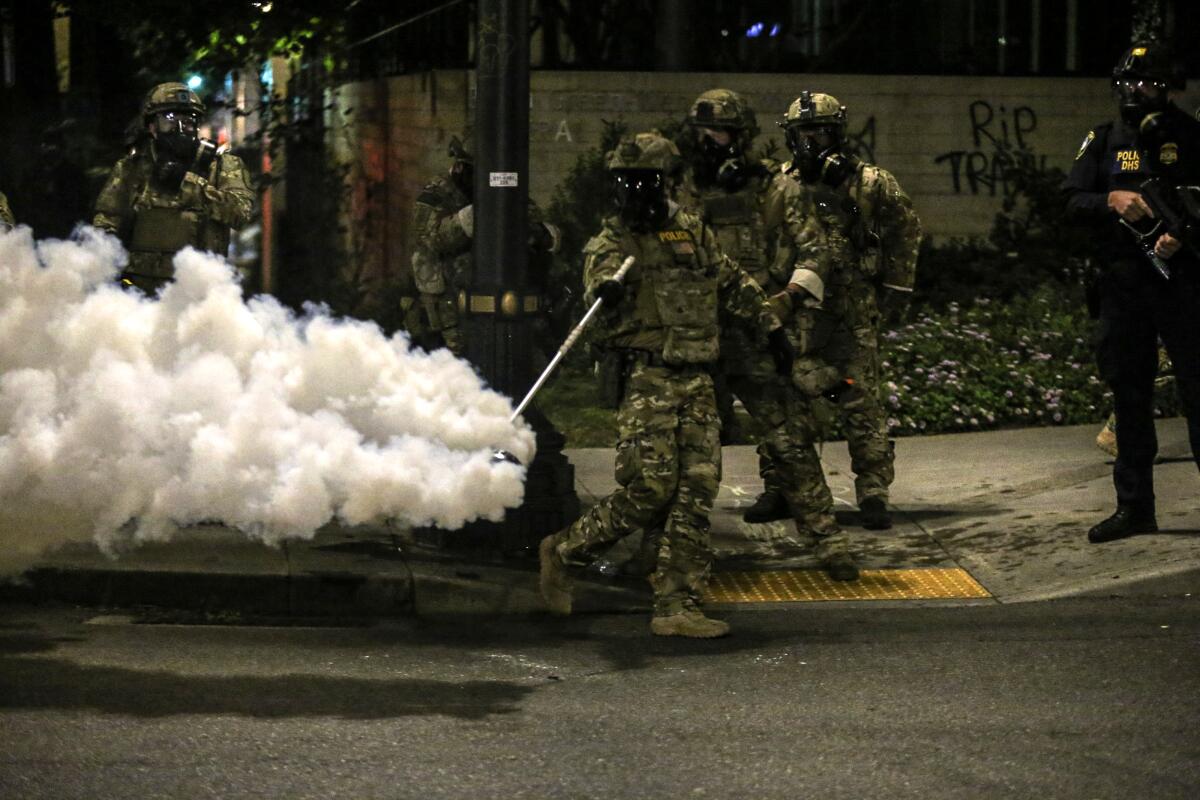
The deployment of federal agents in Portland, Ore., over the objection of state and local officials, to shoot and gas protesters and to snatch people from the street to stuff them into unmarked vans is an unconscionable assault on democracy and a dangerous and needless ratcheting up of tension.
President Trump’s action in defiance of Oregon’s governor and Portland’s mayor has predictably given new life to nonstop protests that began after the May 25 death of George Floyd in Minneapolis police custody but at last had begun to peter out. The president has thus employed his wretched talent for exacerbating division and inflaming discord at precisely the time the nation needs a leader to calm overheated passions and fears.
Presidents have broad power to deploy troops to quell lawlessness, but they generally exercise that power only when governors request assistance, or when the commander-in-chief himself determines that state authorities are failing to deal with the problem. They send in federal forces to protect people or to enforce the Constitution, as when President Eisenhower sent troops to Little Rock, Ark., in 1957 to enforce the right of Black students to enroll in a previously all-white high school and to make clear that the famous Supreme Court ruling in Brown vs. Board of Education would be enforced, that the doctrine of “separate but equal” had been overturned, and that state segregationists could not defy the basic American principle that all people are equal under law.
Trump, by contrast, directed federal agencies to use their muscle to protect statues, monuments and other federal properties, not people or the Constitution. And he said Monday that he plans to do this in more cities — evidently, because he thinks displaying force against the citizenry is going to help him in November.
Is there room for a COVID-19 learning curve when your job endangers your life? The restaurant I work for doesn’t know if it’s doing enough.
This has become part of his pattern. In the weeks before overreacting to the Portland protests, Trump used troops to clear his path for a photo op near the White House. He set forth his doctrine that “when the looting starts, the shooting starts.” He articulated his principle that states should “dominate the streets,” and if they didn’t, that he would override their authority.
It is a fact that some individuals have used the protests in Portland as an opportunity to destroy property and inject chaos into the demonstrations. It fell to Portland leaders to strike the proper balance. They could respond with force, and thus play into protesters’ hands by presenting police engaged in precisely the kind of actions that were being protested; or they could monitor the situation, give protesters the room to make their case, tolerate some property losses and allow the demonstrations to die down on their own.
They made their choices, and they may well have made some bad ones. Portland has been on edge for weeks. But Mayor Ted Wheeler is the person answerable to the city’s people. He did not need, and did not seek, federal backup.
Trump’s insistence on federalizing the situation on his own undermines Portlanders’ control of their own city, and exacerbates the violence far more than the protesters’ actions did.
The president has in effect equated people protesting police brutality with terrorists, and is treating them as such.
When virtual classes resume, the district must do a better job of providing engaging instruction and checking on students who are missing in action.
In October, before Trump’s impeachment, before the COVID-19 pandemic, before the death of Floyd and before the nationwide protests, the president signed an order creating a Commission on Law Enforcement and the Administration of Justice. As with so many steps Trump takes, this one appeared to be geared directly toward undoing an action of the Obama administration, in this case the creation of the 2015 President’s Task Force on 21st Century Policing.
The Obama task force delved into police brutality, racial disparities in arrests and prosecutions, and other challenges facing modern-day policing in the U.S. Its recommendations included enhancing civilian oversight, improving training and building trust and legitimacy. Many of its efforts were rolled back by the Trump administration.
In launching Trump’s commission, Atty. Gen. William Barr included as a central question something that apparently baffles him as well as the president: Why is there a “continued lack of trust and respect for law enforcement” in many communities?
The answer is right under their noses. It is spread out on the street with George Floyd, it is shoved alongside protesters into unmarked federal police vans, it stands agog, with many of us, at actions to protect statues but shoot projectiles at people. The president won’t look. He sees what he sees, with eyes that won’t open.
More to Read
A cure for the common opinion
Get thought-provoking perspectives with our weekly newsletter.
You may occasionally receive promotional content from the Los Angeles Times.
